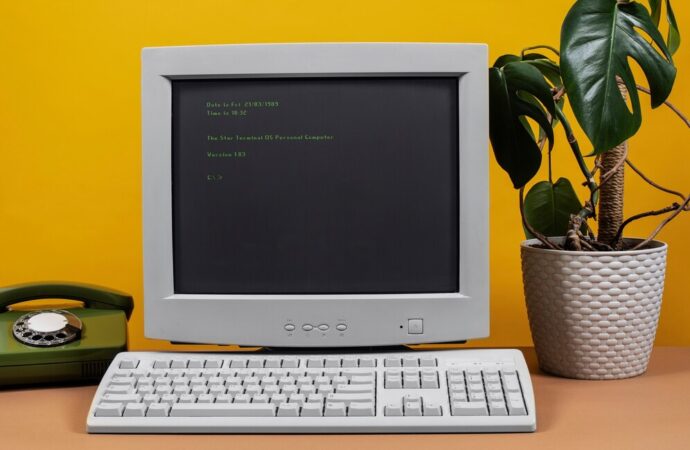Computing technology has evolved at a remarkable pace, from giant machines like the ENIAC to today’s smartphones and portable gadgets. Yet, these hardware advances would hold little value without the parallel rise of software development. Software plays a role in nearly every digital interaction, Whether operating systems, spreadsheets, mobile apps, or games. Here’s a quick
Computing technology has evolved at a remarkable pace, from giant machines like the ENIAC to today’s smartphones and portable gadgets. Yet, these hardware advances would hold little value without the parallel rise of software development.
Software plays a role in nearly every digital interaction, Whether operating systems, spreadsheets, mobile apps, or games. Here’s a quick look at computer software history and its types.
What is Software?
In a computer system, software refers to a collection of instructions or commands that guide the computer in performing specific tasks. Simply, it’s a program that interprets and carries out the user’s commands. Examples include applications like MS Word, MS Excel, and PowerPoint, which help users create documents, manage data, and design presentations.
Types of Software
Software is classified into different types according to its specific functions. These include:
System Software
- Operating System
- Language Processor
- Device Driver
Application Software
- General Purpose Software
- Customize Software
System Software
System software is designed to operate and manage computer hardware while providing essential functions required by users and other software programs. In simpler terms, it controls a computer’s internal workings and manages hardware components like monitors, printers, and storage devices.
Acting as a bridge between hardware and user applications, system software ensures smooth communication. Since hardware only understands machine language (binary code—1s and 0s), and user applications function in human-readable languages such as English or German, system software plays a crucial role in translating between the two. This translation enables software programs to function correctly and interact seamlessly with the hardware.
Application Software
Application software refers to programs developed to carry out specific tasks beyond the core functioning of a computer system. In simple terms, it is created to help users complete particular activities or solve specific problems. These software programs are designed to meet the end-user’s needs and can include programs like word processors, spreadsheet tools, inventory trackers, payroll systems, and database managers.
Computer Software History
Software has played a major role in our lives for the past 40 years, becoming deeply embedded in our everyday routines. It’s surprising to think that the concept of software engineering was introduced just six decades ago. Yet, the advancements made in software development over the past 50 years represent the kind of progress that would typically take centuries to achieve.
1. The Early Days (1940s-1950s)
In the early era of computing, software creation was a hands-on, technically demanding task. Programmers had to write instructions directly in machine code, interacting closely with the physical hardware. This period was defined by a few important characteristics:
Highlights:
Manual Programming: Developers manually wrote low-level code, often working directly with binary or assembly language.
Hardware Constraints: Limited computing resources meant code had to be extremely efficient and compact.
Primary Uses: Software was still in its early stages and mainly served specialized fields like science and defense.
Applications:
- Performing complex scientific computations and simulations
- Powering military and defense technologies
2. The Birth of High-Level Languages (1950s-1960s)
The rise of high-level programming languages like Fortran, COBOL, and LISP marked a turning point in the evolution of software development. These advancements significantly changed how software was written and used.
Highlights:
Introduction of High-Level Languages: Languages like Fortran, COBOL, and BASIC made programming more user-friendly, allowing developers to write code in a format closer to human language.
Compilers and Interpreters: These tools converted high-level code into machine-readable instructions, streamlining the development process.
Expanded Use Cases: Software began to play a larger role in business operations, particularly in managing data and automating tasks.
Applications:
- Processing commercial and financial data
- Creating early versions of database systems
- Operating system development
3. The Personal Computer Revolution (1970s-1980s)
The rise of personal computers transformed software development, making it more accessible to the general public. This period marked a major shift in how people interacted with technology.
Highlights:
Wider Accessibility: Personal computers introduced software development to a larger audience, no longer limited to experts or large institutions.
Graphical User Interfaces (GUIs): Operating systems like Windows and Macintosh brought user-friendly visual interfaces, making computing more intuitive.
Broader Applications: Software became common in everyday tasks such as home computing, gaming, and document creation.
Applications:
- Word processing tools like Microsoft Word
- Classic computer games like Pong and Pac-Man
- The rise of operating systems with graphical interfaces
4. The Internet Age (1990s-2000s)
The emergence of the World Wide Web revolutionized software, turning it into a globally connected and interactive system. This era brought significant shifts in how software was used and accessed.
Highlights:
World Wide Web: The development of the web greatly expanded software beyond local systems, linking users worldwide.
Client-Server Models: These architectures allow users to interact seamlessly with web-based applications, enabling real-time data exchange.
Expanded Use: Software began to play a central role in e-commerce, online communication, and various web-based services.
Applications:
- Web browsers like Netscape Navigator
- E-commerce giants such as Amazon and eBay
- Email and instant messaging platforms
5. The Rise of Mobile and Apps (2000s-Present)
The adoption of smartphones and the rapid expansion of app stores marked the beginning of a new chapter in software development. This shift brought about key innovations and changes in software creation and distribution.
Highlights:
Mobile Devices: The surge in smartphone and tablet use created a demand for software tailored specifically for mobile platforms.
App Stores: Platforms like Google Play and Apple App Store streamlined app distribution, making it easier for developers to reach global audiences.
Diverse Applications: Mobile apps began serving various needs, from entertainment to productivity, reshaping how users interact with technology.
Applications:
- Mobile games like Angry Birds
- Social media platforms like Facebook and Instagram
- Navigation and productivity tools like Google Maps and Microsoft Office
6. Cloud Computing and AI (Present and Beyond)
The current era is defined by the rapid expansion of cloud computing and the seamless integration of AI into software development.
Highlights:
Cloud Computing: Cloud services provide flexible, on-demand resources that support software development, enabling scalability and accessibility.
Artificial Intelligence: Machine learning and Artificial Intelligence are now deeply embedded in software to enhance automation, data analysis, and decision-making capabilities.
Expanding Uses: The integration of cloud services, AI-driven applications, and the Internet of Things (IoT) is shaping the future of digital experiences.
Applications:
- Cloud-based storage and computing platforms like Amazon Web Services
- AI-powered virtual assistants such as Siri and Alexa
- IoT applications that power smart homes and urban infrastructure



















Leave a Comment
Your email address will not be published. Required fields are marked with *